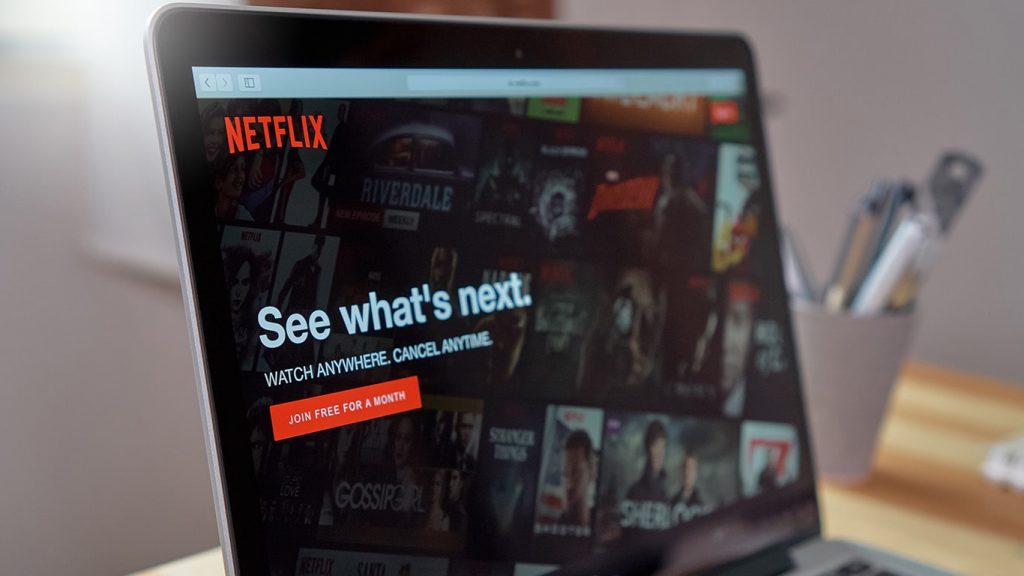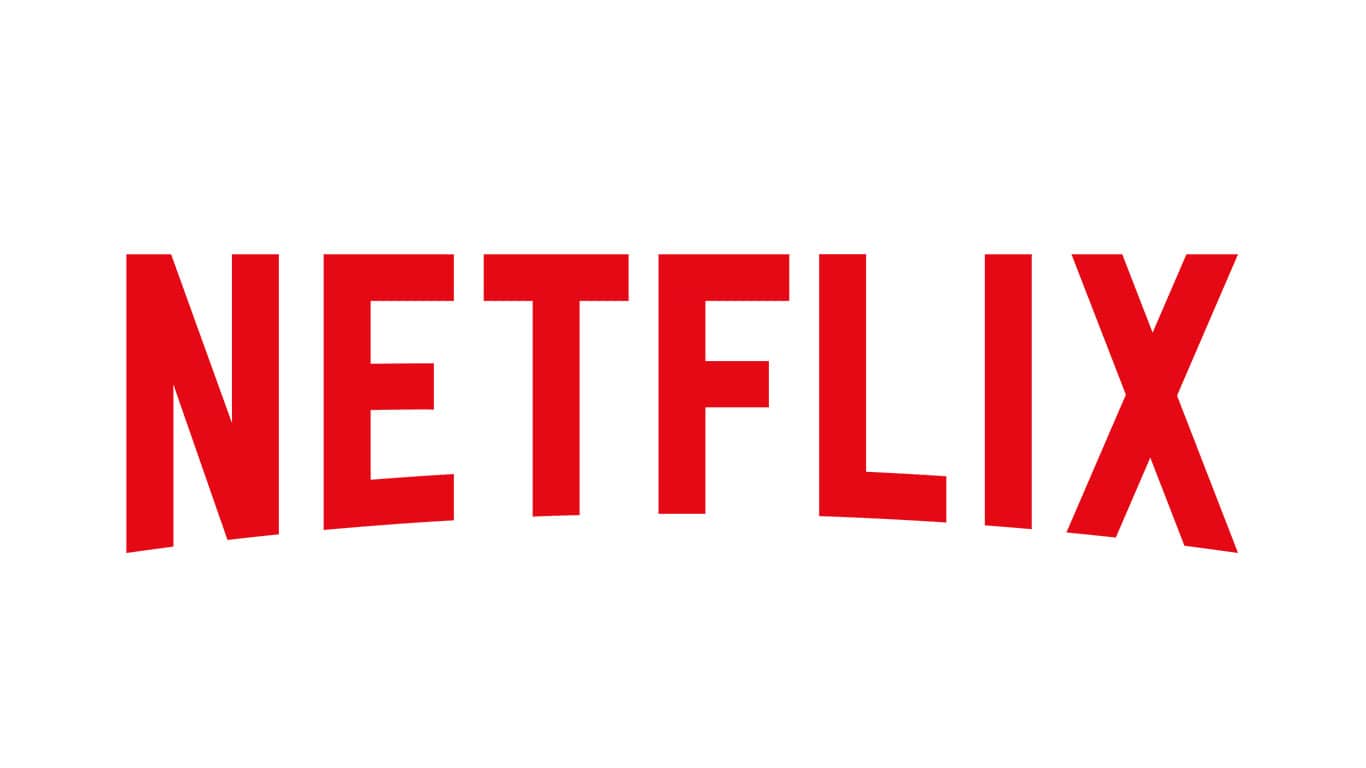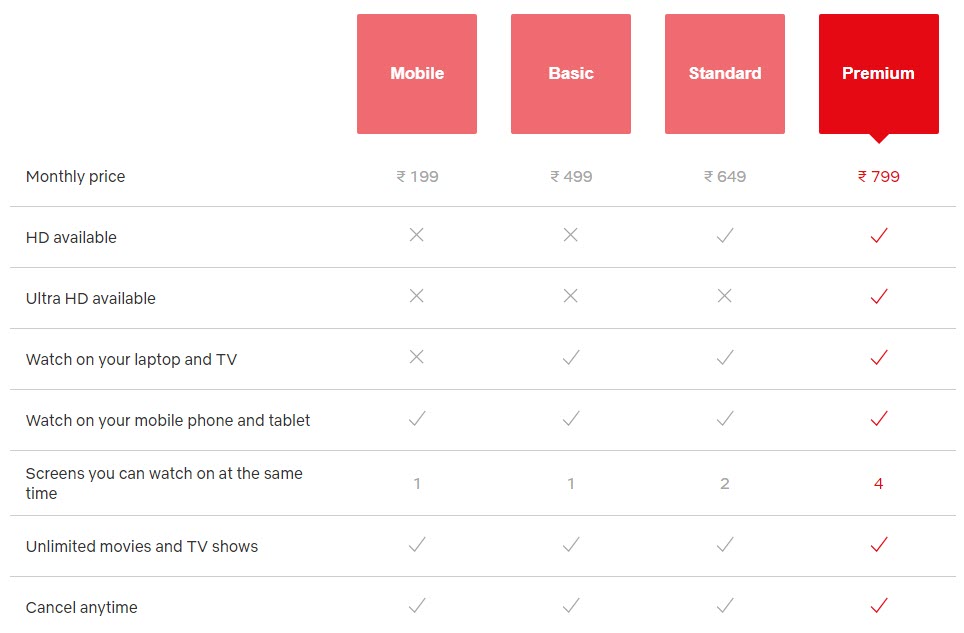
Netflix is a streaming service that allows its subscribers to watch movies, series, and several other types of TV shows on their smartphones, TVs, computers, etc. In other words, we can consider it as a replacement for your cable TV subscription given that some of the channels and shows will be exclusive and will not be available on other platforms. Netflix allows unlimited viewing of the content that you love based on the plans you have chosen. In most cases, just spending around $3 per month, you can have enough things to watch on your device using Netflix without paying for your costly cable subscriptions.
Moreover, unlike many of the services, you can watch whatever episodes of your favorite shows using Netflix without having to depend on Live television. If you would like to rewatch your old favorite movies, just open the app and search for it on the list and there you go. You will be served with a high-quality movie to enjoy your time.
So, most of the users would find it convenient to re-watch their favorite television movies or series without having to wait for them to come back on Christmas evenings. That’s where services like Netflix stand out.
How does Netflix Work?

So that’s enough explanation about the Netflix service. Now, how does it work? How Netflix different from the normal services that provide similar options to watch live television? Is it better or worse than other services out there? Let’s have a deep look at all of these things in this article.
Here’s a simplified step-by-step process of how Netflix works:
- User Subscription: Users sign up for a Netflix subscription using the website or app.
- User Login: Once subscribed, users log in to their account from their devices.
- Selection of Content: Users browse through Netflix’s vast library of movies, shows, documentaries, etc.
- Streaming Request: When a user selects a title, a request is sent to Netflix’s servers. The user’s location, device type, and network conditions are factored into the response.
- Content Delivery: Netflix’s backend system, which is largely hosted on Amazon Web Services (AWS), processes this request. Depending on the user’s location, the content is fetched either directly from Netflix’s primary servers or from a closer content delivery network (CDN) for faster streaming.
- Adaptive Streaming: Netflix uses adaptive streaming technology, meaning the quality of video adjusts in real-time based on the viewer’s network conditions. This ensures minimal buffering and a better viewing experience on Netflix.
- Interactions & Feedback: Viewers can interact with the platform by pausing, rewinding, fast-forwarding, rating content, or changing settings. These interactions are logged by Netflix’s data systems. They use these data to improve their services.
- Data Analysis & Personalization: Netflix also collects data from every interaction users have with the service. This data is analyzed to understand viewing patterns, preferences, and behaviors, allowing Netflix to personalize recommendations and improve the service.
- Updating Catalog: Based on licensing agreements, audience demand, and other factors, Netflix regularly updates its content catalog – adding new titles and sometimes removing others.
- Customer Support: If users encounter issues or have questions, they can contact Netflix’s customer support for assistance.
That’s basically how Netflix works. Now, we will be going in-depth into all these factors to let you decide whether to spend money on Netflix or go for other things like purchasing a monthly cable subscription.
Netflix outline
Netflix is basically a storage of millions of hours of video files that include thousands of movies, TV series, documentaries, and many other types of video content. The service provides the users with all this content upon request.
There are several Netflix Originals that are exclusive to the platform which you cannot find in any other similar services. As it’s one of the most popular streaming services, you can really find some great exclusive content there. All these serve millions of subscribers all over the globe.
Backend
| Component | Purpose |
|---|---|
| AWS (Amazon Web Services) | Netflix relies heavily on AWS for scalable cloud storage and compute capabilities. This includes services like Amazon S3, EC2, and others for data storage and processing. |
| Apache Cassandra | A highly scalable, distributed database that Netflix uses to ensure its service remains available to users even in the event of server or data center failures. |
| Apache Kafka | A real-time data streaming platform used by Netflix to process billions of messages per day. This enables real-time monitoring and decision-making. |
| Hadoop | Used for distributed processing of large data sets across clusters of computers, which can help in data analysis and insights. |
| EVCache | Short for “Ephemeral, Volatile cache”. This is a caching solution developed by Netflix to manage and rapidly access frequently queried data across distributed systems. |
| Zuul | An edge service that provides dynamic routing, monitoring, resiliency, and security. Netflix handles and routes incoming traffic to the appropriate microservice using Zuul. |
| Ribbon | A library developed by Netflix that provides client-side load balancing and fault tolerance for service-to-service communication in their microservices architecture. |
Like many other services out there, a bunch of features such as recommended videos based on your watch history that is decided by an algorithm running in the backend will be available on the platform as well. The video streaming is incredibly fast with the help of powerful servers backing it up.
According to several reports, Netflix is hosted on AWS as one of their topmost prioritized customers to serve content as fast as possible. With the help of this advanced hardware and custom software, Netflix provides its users with unquestionably fast web content streaming without limits.
Even though thousands of users watch the same movie or TV shows at the same time, Netflix still manages to provide super-fast content to each one of them simultaneously. Utilizing their powerful CDN (Content Delivery Network) known as the Open CDN that downloads and stores content in different CDN servers placed all over the globe, delivering content from the nearest server to the user makes it several times faster.
So, basically, even though thousands of requests are being made to the same episode of a series, the content is being delivered from different servers all over the world each one of them powerful enough to handle the traffic.
Whenever a user makes a search for a show and finds their target movie to watch and hits the play button, the request is sent to the nearest CDN server detected by the Netflix algorithm, then the video content starts streaming from the chosen server. So, that’s how they manage to deliver the content so fast, so effortless, and with the highest quality out there.
The speed and quality of the streamed content depend on your internet connection speed as well. However, even with the slowest of the connections, the videos will keep on playing with less quality.
There are also reports that they serve their web content such as the JavaScript files from the Akamai servers (one of the fastest and most reliable servers out there) making the service lightning-fast and running the year-long without any interruptions. The resources such as the UI elements, graphics, web resources, etc. are fetched and served from these servers to the users.
Subscription
So, they sell monthly subscription-based plans to the customers which also has a 30-day trial if you want to give it a try before spending some actual money on it. They make most of their money with the subscriptions, but some portion of it also comes from the ads they serve. You can cancel the subscription whenever you like. There are 4 Netflix subscription options available as follows:

- Mobile: for mobile users with unlimited movies and shows.
- Basic: Watch Netflix on 1 screen at a time.
- Standard: Watch Netflix in HD on 2 screens at a time.
- Premium: Watch High Definition and the Ultra High Definition Netflix on 4 devices simultaneously.
Devices
As a user, Netflix allows you to watch your favorite videos anywhere at any time and on any device that supports the Netflix app or software or basically can access the internet.
Smart TV’s that support the Netflix app (yes, there are TVs that don’t), Android or iOS smartphones, iPads, Computers, Streaming media players, Gaming consoles such as the PlayStation or Xbox, and almost any device that you own can be used to watch Netflix.
So, that’s how Netflix works. I hope you got what you needed and understood the basic functioning of the service. If you ask me if the service is worth it and if should you go for it, which might be the reason you searched for this article, my answer would be a simple YES.
If you are planning to subscribe to something that can provide you with your favorite movies, TV series, and other content which allows you to go back to them at any time you feel like, Netflix would be an affordable option for you.